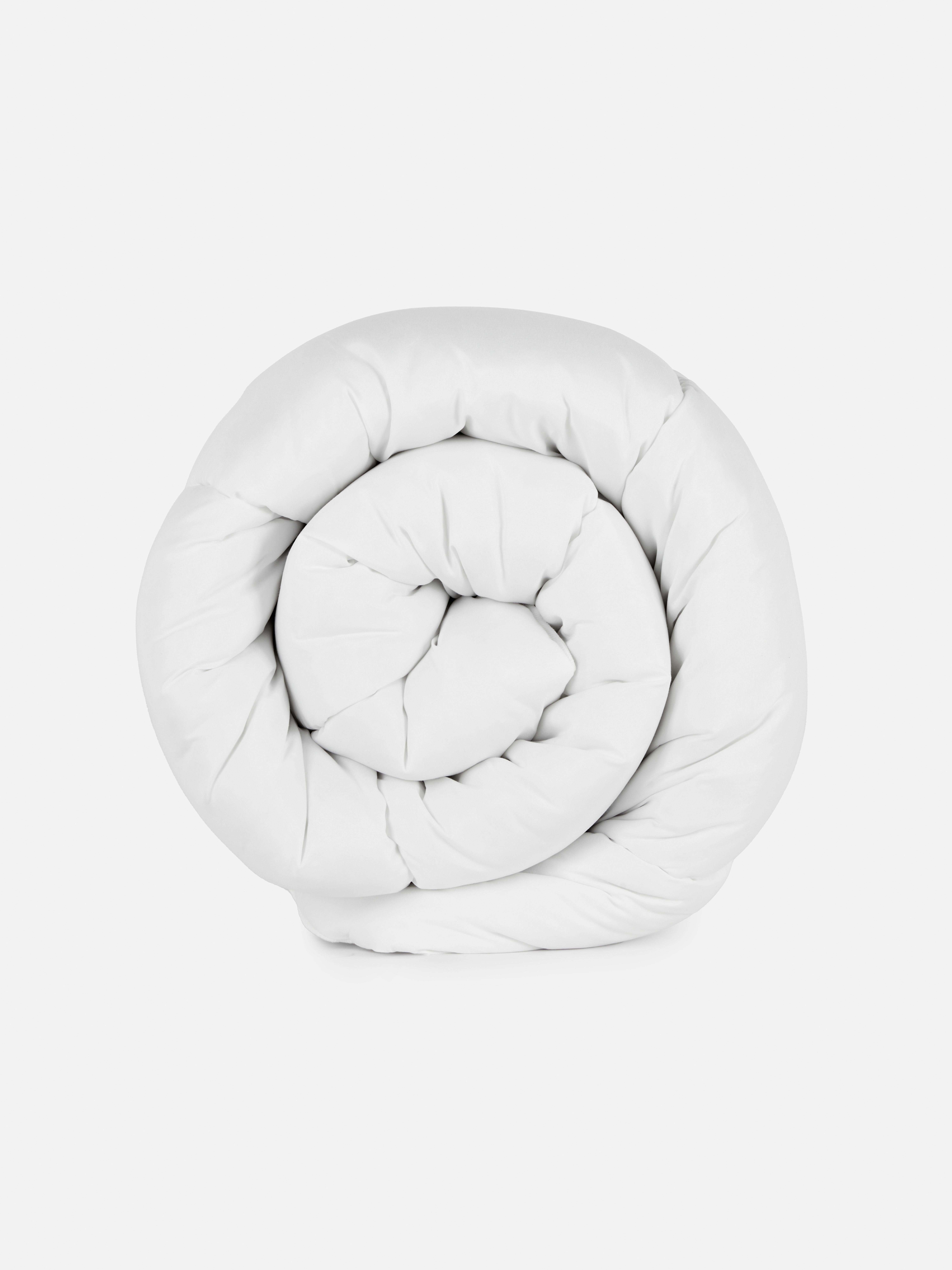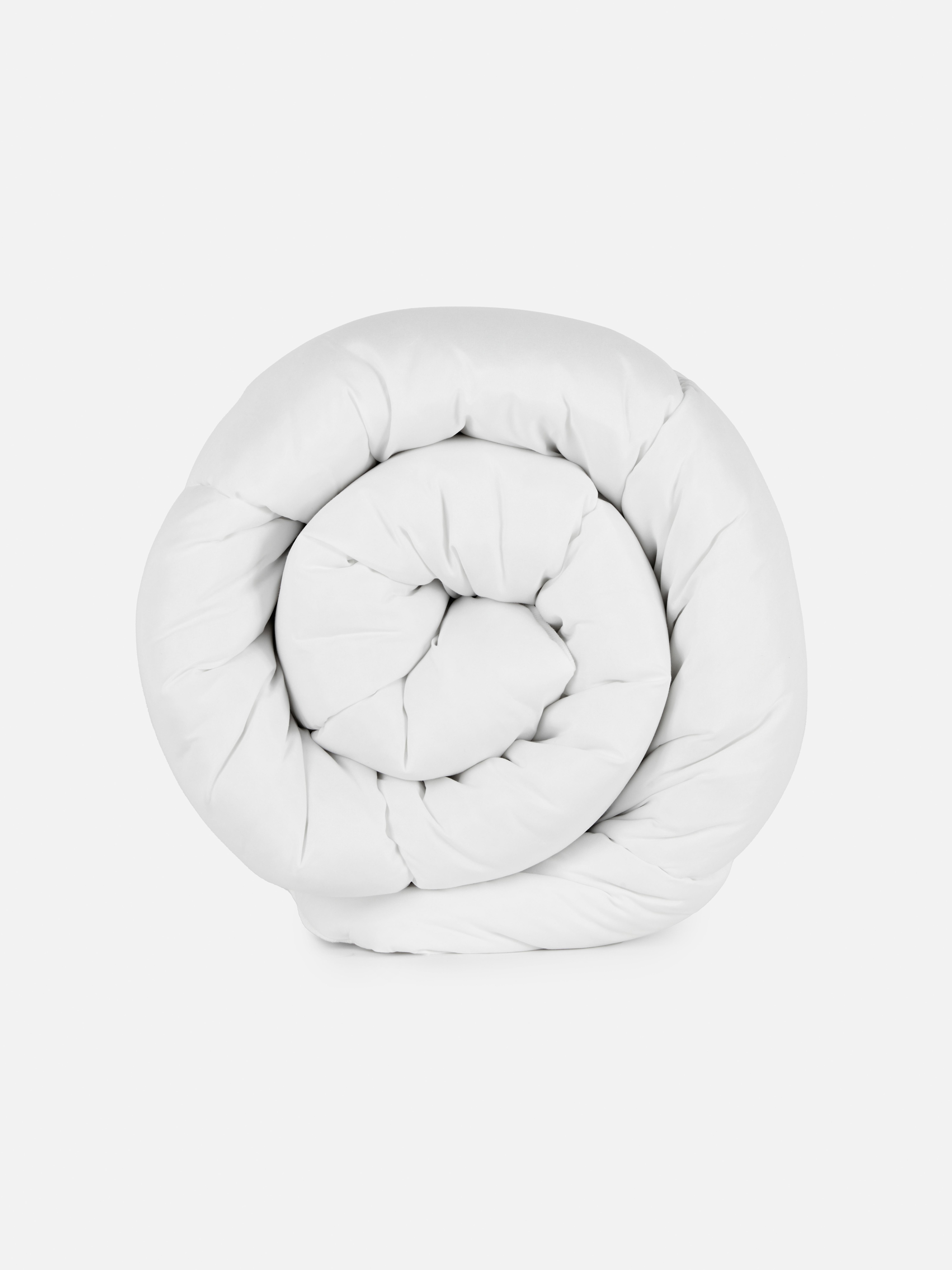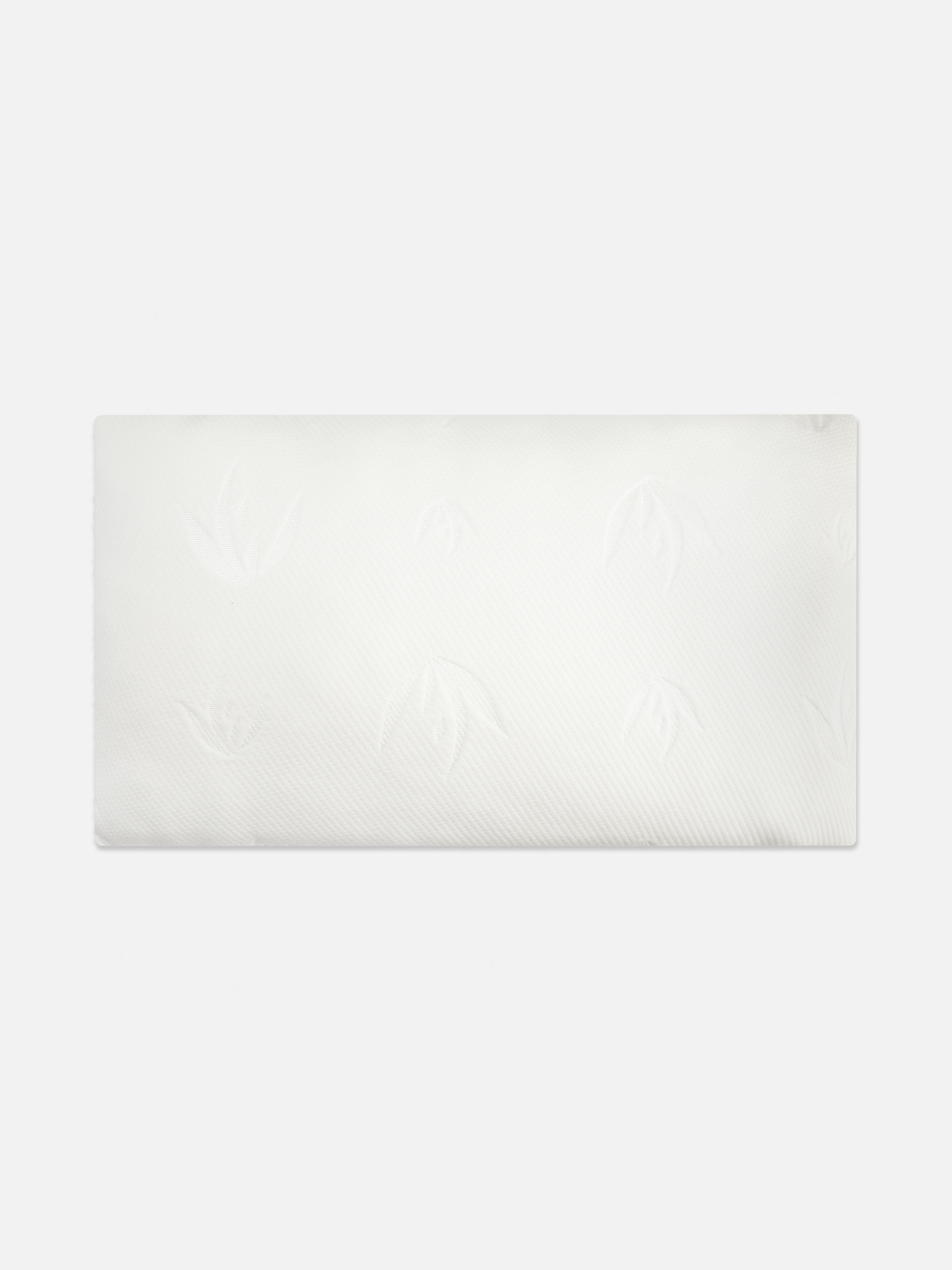Duvet Tog Guide
Find out which thickness and weight of duvet is right for you with our duvet tog guide.
A good night’s sleep relies on many things — some we can control and some we can’t. You’ve got your bedtime routine down, your space is clean and tidy, and the bed of your dreams is right there. But how much thought have you given to your duvet beyond its pretty covers?
What is a tog?
Tog is a measure of a duvet’s thermal insulation. Tog ratings indicates the degree to which a duvet retains heat. The higher the tog rating, the better the heat retention and the warmer it’ll keep you throughout the night. Here’s a general breakdown:
Low tog rating (1.0 to 4.5): Suitable for summer or warmer climates.
Medium tog rating (7.5 to 10.5): Ideal for spring or autumn.
High tog rating (12.0 to 15.0): Best for colder months or cooler climates.
How are duvet togs measured?
Different processes may be used depending on what the duvet is filled with but, in short, finding the tog rating is achieved through a testing method in which heat is applied to one side and measured across to the other at multiple points.
Does a thicker duvet mean warmer?
Duvet thickness doesn't always indicate warmth, as synthetic fillings often require more material to match the insulation of a down duvet. This results in heavier duvets with the same tog rating as lighter, natural-filled ones. In short, thicker doesn't always mean warmer.
Difference between tog rating and duvet weight?
A duvet’s tog rating and a duvet’s weight are two different things, but both are important when it comes to picking the option most suitable for your personal level of comfort. You’ll often see something called a ‘fill weight’. This is the weight of whatever’s filling that duvet, measured in ‘GSM’. This is the weight of the filling within a square metre. The higher the number, the thicker the duvet.
Why are some duvets measured by weight?
There are some duvets that simply can’t be measured by tog. So, all you can go on is the weight. For example, silk duvets are measured using weight (grams of silk per square metre) — the heavier the duvet, the more likely it is to keep you warmer.
Do babies need a duvet?
It’s not safe for babies below 12 months of age to use duvets, so always stick to using lightweight baby blankets and baby sleeping bags — you’ll find endless options for both when browsing the nursery and baby bedding sections.
Duvet Fillings
All the duvet fillings you’ll come across fit neatly into one of two categories: natural and synthetic fibres. They each have their pros and cons, so your choice is down to personal preference.
Natural duvet fillings
Duck feathers and down tend to be the most common natural duvet fillings. Why? They’re great insulating fibres, keeping you warm in cold weather and cool during heat waves, while also allowing your skin to breathe. An added advantage is that these natural fibres are often longer lasting and more durable than synthetic options. It’s worth noting natural fibre duvets typically have higher price tags, and some people have sensitivities, allergies or lifestyles that don’t align with using feather and down duvet fillings.
Synthetic duvet fillings
Synthetic duvets can be made from hollow fibres and microfibres. The difference: hollow fibres are thicker and tend to trap heat more easily, whereas microfibres are much finer and boast a soft and light feeling, much like a natural duvet filling. There are several benefits to choosing a synthetic duvet filling. First and foremost, they’re usually a much better option for those who suffer from allergies, as they’re less likely to trigger and exacerbate any pre-existing issues. Secondly, synthetic duvets are generally easier to wash and quicker to dry.
Types of Duvets: Tog value by season
You may be wondering exactly what tog you want for each season. So, let’s break it down.
All seasons: 10.5
Winter: 12, 13.5 and 15
Spring/autumn: 7 to 10.5
Summer: 1 to 4.5
What duvet tog should I get?
Duvet tog depends on season, climate, your bed size and your personal preference. However, the most versatile and best year-round coverage is a 10.5 tog.
What is the best duvet for winter?
The best duvet for staving off chills in winter is a 13.5 tog. It should work to keep you toasty overnight when the temperatures drop, without trapping in so much heat that it’s hard to sleep.
Is a 10.5 or 13.5 tog better for winter?
A 10.5 tog is classed as a year-round duvet option, so 13.5 is a cosier choice. However, the right tog value for you depends on the temperature of the room you’re sleeping in and how warm you like to feel.
When should I switch to a winter duvet?
Considering where you live and the general climate you experience (if it’s sweltering year-round, no need for those higher togs!), you should switch to a winter duvet when you enter the season. Though there’s no hard and fast rule for this, so pay attention to the changing weather and your overnight comfort levels.
Caring for your duvet
For natural-filled duvets, taking it to a professional launderette is the best idea, since they need sufficient space to be properly cleaned and can take longer to dry than their synthetic counterparts. If you have a synthetic-filled duvet, you can pop them into your home washing machine on a gentle, warm water cycle and hang it outside on a sunny day to dry. It’s recommended that you wash your duvet every 6–12 months.
What do I do with my old duvets?
You can put them into a clothes recycling bin where they’ll end up going to a charity. Another option is to donate them somewhere yourself, like The Salvation Army, and you can even offer old duvets to animal shelters.
Do duvets lose their tog value?
Yes, if a duvet’s filling starts to lose its fluffiness, it can be less effective at keeping you warm.
How often should you change your duvet?
Generally, it’s advised that you change your duvet every five years.


